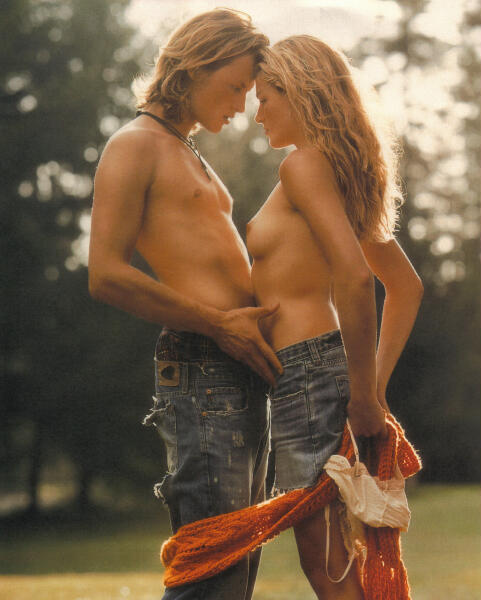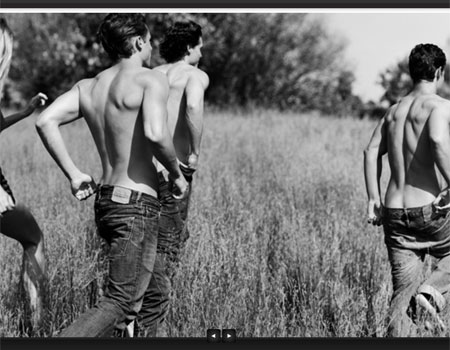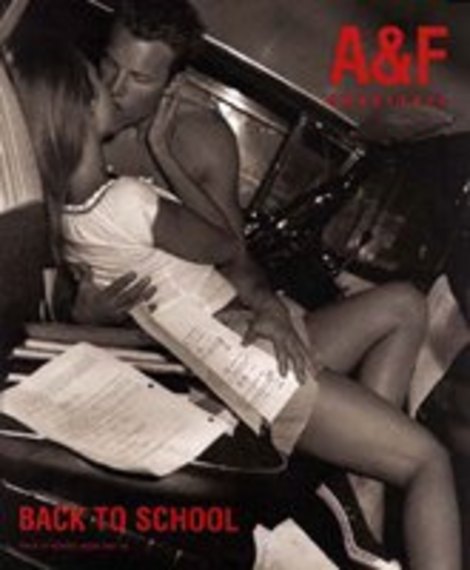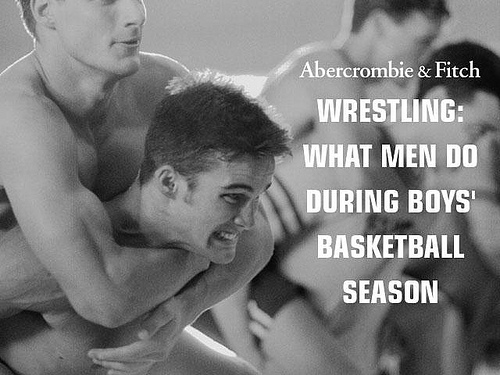Introduction
Abercrombie & Fitch (A&F) is one of the leading high-end clothing retail brands targeting teenagers. The company has been largely affected by the economic recession and the changing macroenvironment. One singularly large hurdle in the company’s downfall has been its reluctance to reduce prices even when its competitors were giving heavy discounts and sale to attract customers due to historically low consumer confidence (Johnston 2009; Gregory 2009). The effect has been observed in the declining store sales of the company. Total store sales of A&F have declined by 23 percent in 2009 and 13 percent in 2008 compared to previous year (Abercrombie & Fitch 2010). Apart from this, there has been an observed decline in store sales and brand sales by 15 to 30 percent (Datamonitor 2009). The changes that have been observed in the environment of the company are changes in macroenvironment i.e. economic recession, changes in preference of the consumers from regular wear to star endorsed clothing lines. Evidently, this fall in profit and sales of the brand can be attributed to the company’s inability to adopt the right strategy to bring up the brand. Further, a decline in sales figure also indicates lack of penetration of the brands. Apart from the macro environment, there have been changes in the microenvironment which ahs affected the company’s sales. The consumer preference and fashion trend has changed considerably. Another aspect has been a decline in disposable income due to recession and decline consumer confidence that has affected overall sale of many brands in different sectors. A&F’s competitors like Aéropostale have changed its pricing strategy responding to the changes in its environment (Gregory 2009), which has increased the sale of its products, while that of A&F has declined. This paper will devise strategies that would help the company increase its sales figures and sustain it.
Strategies for Future
The first question that needs to be asked is what should be the generic strategy of A&F. A&F’s strategy has been differentiation. Traditionally the brand had maintained it’s up scale image through selling of apparels, which were designed to look casual and undersigned. Their target market had remained from 18 to 22 years. The prices have remained to be high in order to maintain brand image of high end product. However, the brand image of over priced college wear seems to have worn out is appeal to the target market due to changing environmental factors. Based on the changes in the external environment and changes in the preferences of the customers, the strategy alternatives for the company have been recommended.
Marketing Mix
The first strategy that the company must look at is the marketing mix i.e. price, promotion, position, and place. The company had stubbornly kept its prices high even during recession. Thus, this affected the bottom line and hit sales. Thus, the first strategy for the company would be to realign its strategy related to its pricing, product, place, and promotion.
Price: The price for A&F products had not been reduced even through the recession. When all its competitors were heavily relying on discounts and sales, in order to increase sales, and maintain profit, A&F had struck to its old high end pricing strategy for a luxury casual brand and faced reduced sales figures. The first strategy of the company would be to maintain its niche fashion brand image and price it high. The company’s strategy throughout the recession has been not to decrease prices through discounts as the management believed that customer takes the discounted prices as the base prices and it would alienate the customers when the discounts are removed, as they would perceive it to be a price increase (Gregory 2009). The company should maintain this niche brand pricing, as this would maintain the company’s image and differentiate it from its competitors and other brands like teenage causal wear brands like GAP or Aeropostale. The pricing for the products should be kept fixed in future in order to maintain the brand image and niche perception among customers.
Product: One problem with A&F has been its outdated style of clothes and changed customer preference. A&F has maintained the style and fashion of their products unaltered for last one decade. The styling of the clothes has always been understated and casual (Hicks 2008). Thus, it is believed that in the last decade the popularity of the brand and similar labels on simple clothes has made it a common wear. As has been stated by Steve Stretton that “Everybody knows the logo and lots of people wear it – maybe too many. Ubiquity is the enemy of originality.” (Lee 2009, p. 17) Thus, the product offering of the brand must be altered. Many companies have gone for an image makeover from a sportswear brands to say a casual wear brand. Further, it has been pointed out that A&F, though targeted at teens below 22 years only, the products are abundantly purchased by men and women in their 30s. Traditionally the brand was segment exclusively for youths: “…positioned A&F around youth and sex with a targeting strategy that explicitly communicated that the brand was only for the young, the thin and the beautiful” (Ritson 2008, p. 21). This shows that the company had continuously developed products for young people who believed in looking sexy and beautiful and adhered to a specific body image. Thus, the appeal of the brand with older generations was almost non-existent, and the company did not aim to change the perception for they wanted to provide the product only to the youths (Ritson 2008). This can be observed from the models used for in the advertisements of A&F.

The target customers of the brand are explicitly men and women within the age group of 14 to 22 years and children from age 6 to 13 years. The website as well as the advertisements has castings that belong to the age group. Thus, the products too have a youthful feel to them. However, with changing of the trends the casual, classic look is changing with more youths clamoring for celebrity-endorsed clothesline, especially in case of higher end products. The strategy would be to bring in fresh style for the coming seasons as A&F classic look has long gone out of style (Gregory 2009).
Promotion: The brand has been famous for its maverick advertisements and promotions. The explicit and implicit sexual acts and nudity had been characteristics of A&F. figure 2 presents a picture from the Christmas collection of an A&F Quarterly, which was banned, for its explicit sexual content. In figure 3 is another advertisement, which had been objected to due to presence of nudity. Thus, the promotions of A&F have historically been sexually explicit and had tried to make their brand get the sexy appeal from the youths. The clear sexual depiction has been observed in many of its advertisements, especially those in schools (see figure 4). Thus, other the explicit sexual images, the advertisements clearly depicted “… the masculine ideal downward, celebrating young men in their teens and early 20s with smooth, gym-toned bodies and perfectly coifed hair.” (Denizet-Lewis 2006) Clearly, the brand image that the promotions tried to portray was that A&F brand represented a sexy and youthful cult. Further, these promotions have become commonplace as other brands like Calvin Klein and DKNY have also employed such strategy to promote their brands (Tucker & Moin 2004). Thus, the promotion strategy has lost its differentiating factor.




However, this trend had been successful earlier, and A&F had been successful in attracting young customers with its “maniacal targeting” and brand promotions:
“The huge building is testament to A&F’s total brand vision and maniacal target marketing. The first thing you notice is… nothing. The store has almost no signage. The only way to find it is for someone to tell you where it is. When you do arrive, you meet a perfectly toned 20-something male model, who stands nonchalantly in the doorway wearing only his underwear. Then comes the interior and lighting, so dim that the eyes of anyone over 20 will struggle to see any of the clothes on display. A cool soundtrack has been turned all the way up to 11 to make the place unpleasant to the ear of anyone born before l985.And finally there are the queues.” (Ritson 2008, p. 21)
The promotion strategy that should be employed now in order to attract customers is more star appeal for higher end brands. A&F does not have a celebrity affiliation. The brand must be associated with stars or boy or girl bands who have assumed the role of idols for today’s youth. The appeal to look sexy and sexual content in advertisement no longer seem to be an endearing factor which can attract youths today.
Place: The company operates in the US, Canada, Europe, and Asia (China and Japan). The company must try to expand its presence in other countries especially the emerging nations of Asia and Latin American countries like Brazil. The effect of the recession in these regions has been low and therefore the company must aim at geographical expansion. Further, many companies like Gap have taken advantage of the supply chain and effectively reduced their cost of procurement of garments so that they could sell them cheaper. A&F could make its supply chain stronger in order to make the profits for the company higher.
Brand Position
The brand is presently positioned as a high-end luxury casual wear. This positioning is right for A&F, especially if it wants to maintain its luxury brand appeal. The main strategy that should be employed by the company is to change the positioning solely targeting the youths to even middle aged customers. This would increase the customer base. Another factor may be found is in its popularity with the previous generation (Ritson 2008). A similar brand has been made by A&F called RUEHL that has been priced 30 percent higher than A&F and targeting the 22 to 35 year old customers (Driscoll 2006). However, the brand has shown the maximum fall in sales (Abercrombie & Fitch 2010). This shows that the brand’s pricing should be looked at and instead of launching sub-brands which are costlier, the company should aim at launching sub-brands which can aim at the cost conscious, youths who so far are moving towards brands like Gap or Aeropostale. Thus, A&F as a brand must position itself as a high-end brand with more designer options, as youth today do not want to buy regular wear at a higher price. Whereas, the regular, casual wear crowd are those who have become price conscious and would like to but their clothes at a cheaper rate.
Target Market
The target customer for A&F has been urban, single 14 to 24 years old crowd. Its different brands like REUHL or Hollister target young crowds. Therefore, there is a possibility of cannibalization of brands. However, if the brands are positioned in different segments, for instance, A&F retained its high-end appeal, while the other brands targeted an older or younger crowd at a lower price range, it could have been a greater success. The target customer for the brand has always been the “the casually flawless college kid” (Denizet-Lewis 2006). Thus, the target customer of the brand must be made broader and the company should refrain from being a very niche brand. Keeping youth at heart of the brand, the target should be expanded to people of all ages, who aim to remain youthful. Thus, the A&F brand should not restrict its target customer to a rage of 14 to 24 years only, and expand its demographic target.
Brand Image
The brand image of A&F has been more for men than for women. Further, the appeal of the brand has been for men than for women. The masculine and athletic college boys look has over powered the female line of the brand:
“A&F aged the masculine ideal downward, celebrating young men in their teens and early 20s with smooth, gym-toned bodies and perfectly coifed hair … A&F has had less of a cultural impact on women’s fashion. Its girls’ line is preppy, sexy and popular, but the company has mostly remained focused on pleasing the all-American college boy” (Denizet-Lewis 2006)
Figure 5 shows an advertisement with male models wrestling and another advertisement where two men are walking. Stores with young men in underwear or jeans greeting customers, is customary in A&F stores, indicating a very distinct target towards young men. Thus, the masculine image of the brand must be changed in order to attract more female customers, as they too are a target of the company. Therefore the brand image must become less racy or racist, and more diversified in terms of age, race, color, and sex.

Conclusion
The strategy that the company should take in the long run in order to maintain its brand and increase sales are:
- Maintain brand positioning as a high-end luxury casual wear brand. However, should increase celebrity affiliation. Further, the sub brands should target at other segments and aim at a lower price range too in order to attract more customers.
- The brand image must be changed. Presently A&F stands for white, young men and is more popular among men. However, the appeal must be extended towards women too. Further, the brand must extend its product line in order to appeal to the youth today, as the casually sexy look of the 90s has become passé.
- The target customer for A&F brand must be extended in terms of demographics i.e. age, sex, color, and race. The traditional white man’s wear concept of the brand must be changed. The firm must shed its racist attitude and extend its line for Hispanics, Asians, as well as African-Americans.
- Geographical expansion for the brand is important. The retail markets in the Asian and South American countries especially in China, India, and Brazil are expanding rapidly (Young 2008). The brand must concentrate on geographical expansion in order to gather greater share of the international market.
References
A&F Quarterly 2009, Abercrombie and Fitch Christmas Catalogue, Web.
Abercrombie & Fitch 2010, Abercrombie & Fitch, Web.
Abercrombie & Fitch 2010, Sales History (in millions), Web.
Abercrombie & Fitch Wrestling Ad 2010, Web.
Associated Content 2007, Abercrombie & Fitch Ad Says: Get into Our Jeans and She’ll Get Out of Hers, Web.
Datamonitor 2009, ‘Abercrombie & Fitch Co.’, Company Profile, Web.
Denizet-Lewis, B 2006, The man behind Abercrombie & Fitch, Web.
Driscoll, M 2006, Abercrombie & Fitch: Power Shopper, Web.
Gregory, S 2009, Abercrombie & Fitch: Worst Recession Brand?, Web.
Hicks, P 2008, ‘Paul Hicks on Abercrombie & Fitch’, Media.
Johnston, C 2009, Abercrombie & Fitch refuses to reduce prices. Web.
Lee, J 2009, ‘Abercrombie & Fitch’, Marketing. Web.
MSNBC 2008, Abercrombie & Fitch obscenity charge dropped, Web.
Ritson, M 2008, ‘Abercrombie has XXL-sized’, Marketing. Web.
Tucker, R & Moin, D 2004, ‘A&F’s Makeover Mode: Chain’s NewConcept May Chase Older Crowd ‘, WWD: Women’s Wear Daily, Web.
Young, R 2008, Conquering the frontiers for luxury, Web.
